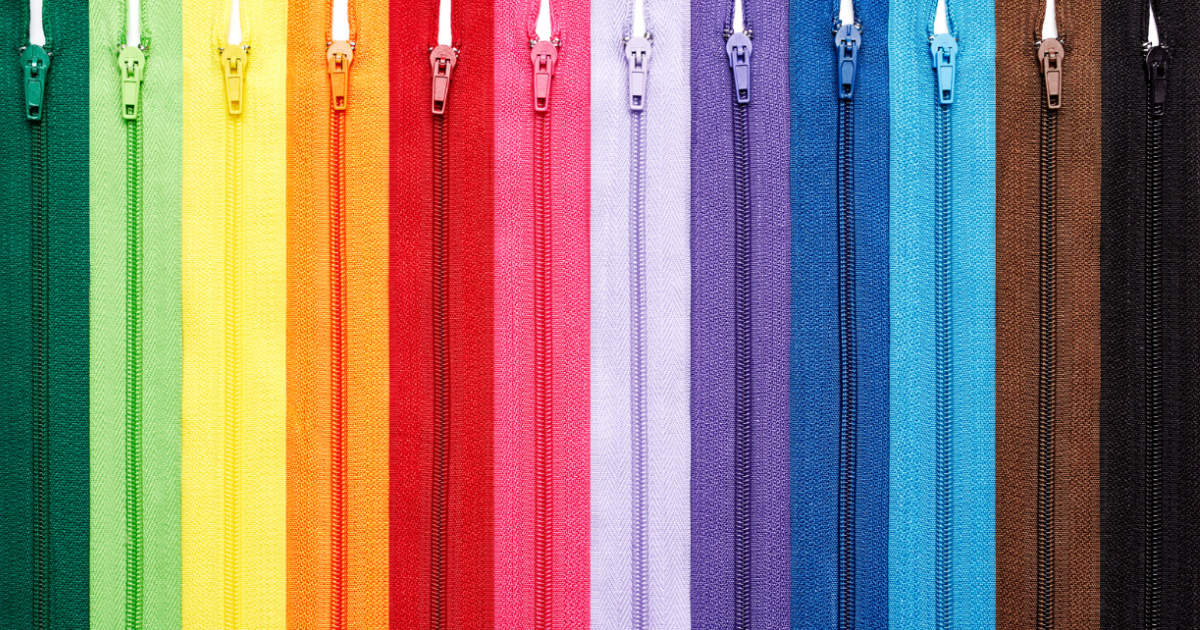
Zippers are one of the most overlooked but essential clothing, bag, and gear components. We use them daily, often without a second thought—until they stop working. A stuck zipper can ruin a favorite jacket, a piece of luggage, or even an expensive tent. The good news? Many zipper problems can be fixed with simple tools and techniques, saving time and money. This guide will walk you through everything about zipper repairs and maintenance. Whether you’re dealing with a stubborn, stuck zipper or a completely broken one, this article will equip you with the knowledge to tackle common zipper problems and prevent future issues.
Common Zipper Issues & Solutions
Zippers may seem simple, but they can fail in various ways. Here’s how to recognize, fix, and prevent the most common zipper problems.
1. Separating Zippers
A separating zipper is a common issue where the teeth fail to stay closed after being zipped up. This often happens when the slider becomes worn down, preventing it from properly engaging with the teeth. Over time, the metal in the slider loses its grip, making the zipper ineffective at holding both sides together. A quick fix for this issue is using pliers to gently squeeze the slider, tightening it just enough to improve its grip on the teeth. However, applying too much pressure can cause further damage, so it’s essential to be careful when adjusting it.
Replacing the slider entirely is the best option for a more permanent solution. When doing so, ensure that the replacement slider matches the original in size and type to ensure smooth functionality. To prevent this issue in the future, avoid using excessive force when zipping up, as pulling too hard can accelerate wear on the slider. Dust and dirt can also contribute to slider degradation, so keeping zippers clean can extend their lifespan. Proper care allows a zipper to function smoothly for years without major repairs.
2. Damaged Zipper Teeth
Damaged zipper teeth can prevent a zipper from functioning properly, making it difficult to close or causing the teeth to misalign. Signs of this issue include individual teeth that are bent, missing, or broken, preventing the slider from engaging correctly. The most common cause of damaged teeth is physical stress, such as accidentally crushing, bending, or pulling on the zipper with excessive force. If the teeth are slightly bent, they can often be repaired using pliers to realign them carefully. However, a complete zipper replacement is usually necessary if teeth are missing or severely damaged.
Unfortunately, replacing a zipper can be time-consuming, but it’s the only reliable solution for extensive damage. To prevent damage in the first place, always zip carefully and avoid forcing the zipper when it meets resistance. Keeping zippers away from pets is also essential, as they tend to chew on them, leading to broken teeth. Regularly inspecting zippers for early signs of wear can help catch minor issues before they become unfixable. With proper handling, zipper teeth can remain in good condition and extend the life of the garment or accessory.
3. Broken Starter Pin or Box
A broken starter pin or box is a serious zipper issue that prevents the zipper from engaging at the bottom. This occurs when the starter pin, the small insert at the base of the zipper, cracks or detaches from the fabric. When this happens, the zipper pull may still move, but the teeth won’t close properly, making the zipper useless. The most common cause of starter pin damage is repeated stress at the base of the zipper, often from pulling too hard or improper handling. Unfortunately, repairing a broken starter pin is difficult, and the entire zipper must be replaced.
While a full zipper replacement may seem inconvenient, it is usually the best long-term solution. A tailor or professional repair service can replace the zipper for high-quality garments without compromising the item’s overall durability. Always carefully handle zippers to prevent starter pin issues, especially when first engaging the teeth at the bottom. Avoid yanking on the zipper or forcing it closed when it resists, as this puts extra strain on the starter pin. By zipping up gently and maintaining proper zipper function, you can prevent breakage and extend the life of your clothing or gear.
Understanding Zipper Types
Not all zippers are created equal. Knowing the different types will help you choose the correct repair parts and avoid compatibility issues.
1. Coil Zippers
Coil zippers are made from a continuous coil of plastic, making them flexible and lightweight. They are available in forward and reverse-facing designs, allowing versatility in different applications. Commonly used in outdoor and technical gear such as backpacks and rain jackets, coil zippers are designed to handle frequent use. They come in various sizes, including #3, #4.5, #5, #8, and #10, catering to different strength and durability needs.
One of their main advantages is their ability to bend easily, making them ideal for curved applications where rigid zippers may not function well. However, a major drawback of coil zippers is that they can be prone to separation issues if the slider wears out. Despite this, their flexibility and lightweight construction make them popular for many types of gear and clothing.
2. Vislon (Molded Tooth) Zippers
Vislon zippers, also known as molded tooth zippers, are made from individual plastic teeth that are injection-molded onto the zipper tape. They come in two major styles: pre-2000 models, which tend to have a looser fit between the teeth, and post-2000, more tightly secured versions. Available in sizes #3, #4, #5, #8, and #10, these zippers are commonly used in outdoor gear, jackets, and luggage. One of their biggest advantages is their durability, as they are more resistant to dirt and corrosion than coil zippers.
This makes them ideal for use in harsh environments where exposure to water and debris is common. However, a significant downside is that if the teeth break, they are difficult to repair, often requiring full zipper replacement. Despite this, their strength and resilience make them reliable for heavy-duty applications.
3. Metal Zippers
Metal zippers are made from materials such as aluminum, brass, or nickel, providing them with a durable and classic appearance. They are available in various sizes, including #3, #5, #7, #8, and #10, with larger sizes offering increased strength. Commonly found in high-quality jackets, jeans, and leather goods, metal zippers add a touch of sophistication to garments. Their main advantage is their durability, which can withstand significant wear and tear without breaking easily.
However, metal zippers are prone to corrosion over time, especially when exposed to moisture and humidity. Additionally, they tend to be heavier than plastic alternatives, which may not be ideal for lightweight clothing or gear. Despite these drawbacks, their strength and classic look make them a preferred option for premium fashion and heavy-duty items.
Essential Maintenance Tips
Preventive maintenance can save you from frustration and expensive repairs. Here are the best ways to keep your zippers working smoothly.
Daily Care Practices
- Keep it clean: Dust, dirt, and lint can accumulate in the teeth. Wipe the zipper with a damp cloth and mild soap regularly.
- Don’t force it: If your zipper gets stuck, don’t yank it—this can bend teeth or damage the slider.
- Check the pin: Ensure the starter pin is fully inserted before pulling up the zipper.
Professional Tips for Smoother Operation
- Use candle wax: Rubbing a small amount on the zipper teeth can make it glide effortlessly.
- Opt for bigger zippers: Choose a #5 or larger zipper, as they are more durable.
- Look for YKK branding: YKK zippers are known for their high quality and longevity.
- Test before buying: If purchasing a new bag or jacket, check the zipper’s smoothness before committing.
Prevention Strategies
Taking care of your zippers is more straightforward than dealing with repairs. Here are some best practices:
- Avoid overstuffing: Overloading a bag can cause stress on the zipper.
- Stop if you feel resistance: Forcing a jammed zipper can cause permanent damage.
- Size up on clothing: If a jacket is too tight, the stress on the zipper can cause it to fail.
- Clean out dirt: If you use gear in muddy or dusty environments, rinse the zipper with water after each use.
When to Seek Professional Help
Some zipper problems are beyond DIY fixes. Here’s when you should turn to a tailor or repair specialist:
- Missing or severely damaged teeth.
- A broken starter pin or box.
- Complex waterproof zippers (like those on rain jackets and dry bags).
- Structural zipper damage where the fabric around the zipper is torn.
For expensive outdoor gear, check with the manufacturer—some brands offer lifetime repairs.
Step-by-Step Guide to Replacing a Zipper Slider
If your zipper is separating but the teeth are intact, replacing the slider is an easy fix.
You’ll need:
- A replacement zipper slider (match the size and type).
- Needle-nose pliers.
- A flathead screwdriver.
Instructions:
- Remove the old slider: Use pliers to pry off the old slider gently. Be careful not to damage the fabric.
- Insert the new slider: Slide it onto the zipper track, ensuring it’s facing the correct direction.
- Test the function: Zip up and down a few times to check for smooth movement.
- Secure the top stop: If the original top stop was removed, crimp a new one with pliers.
Zippers may be small but play a big role in clothing, bags, and gear functionality. Properly maintaining and repairing them can save you money and frustration. By cleaning them regularly, using proper care techniques, and knowing when to seek professional help, you can keep your zippers in shape for years. Don’t toss your item the next time your zipper gets stuck or starts to separate—try fixing it first. You can breathe new life into your favorite gear with patience and the right tools.




